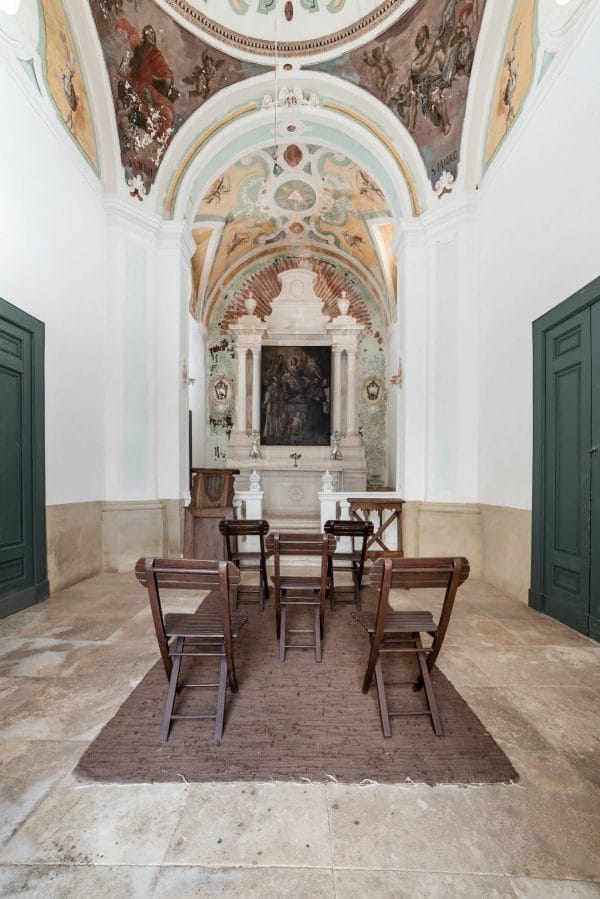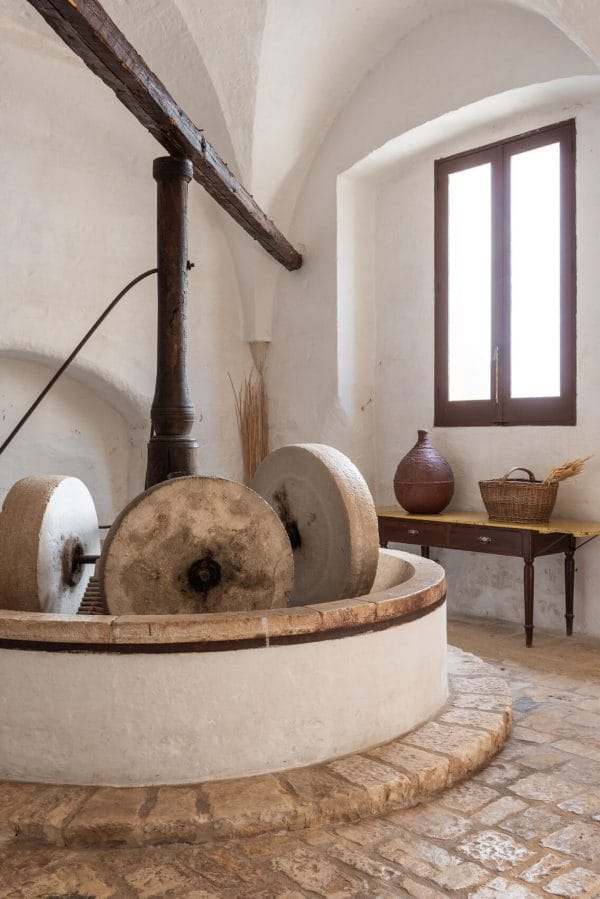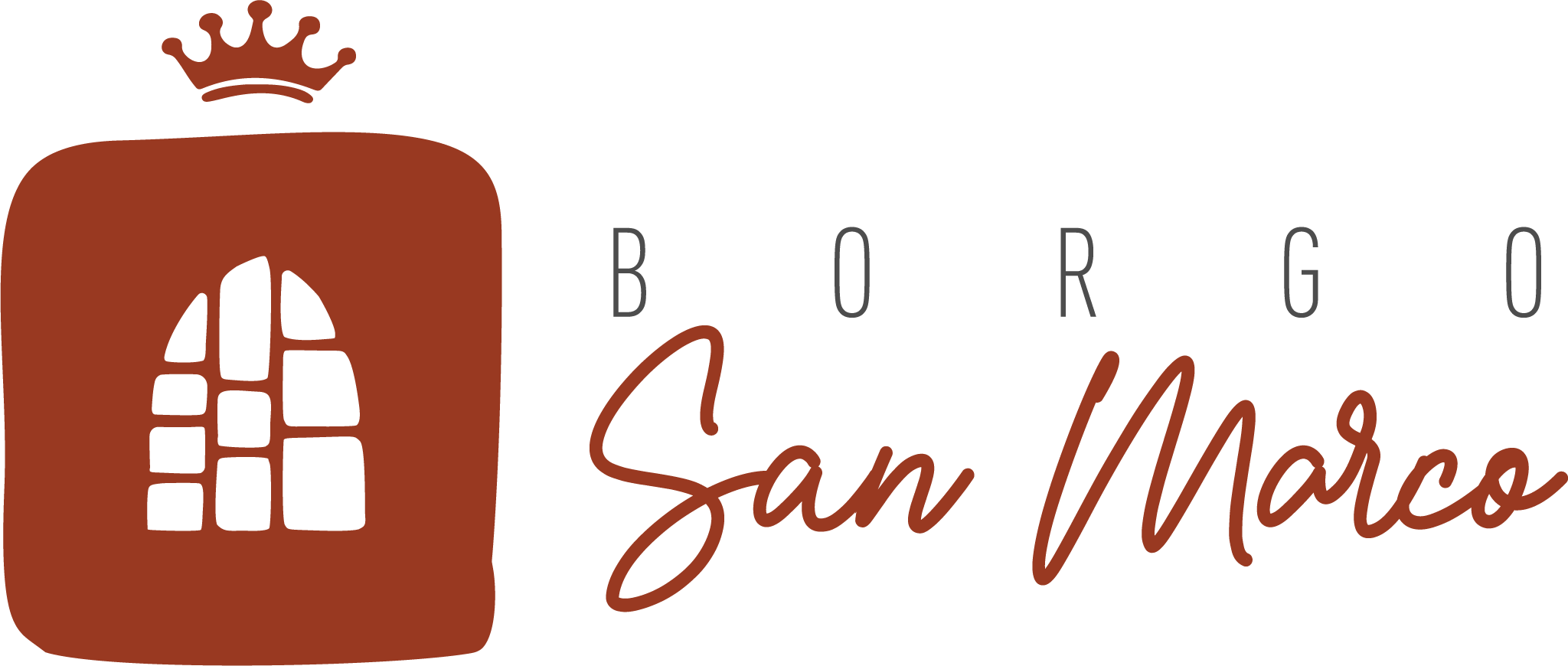Cave settlements


THE PAINTED WONDERS OF BORGO SAN MARCO
New discovers emerged in the cave church of the masseria
In the cave church at the rear of Borgo San Marco (owned by Dr. Alessandro Amati and recently restored by Mrs Nori Meo Evoli) important and beautiful frescos, never seen before, were discovered. The images of the Saints and medieval writings have been hidden for years, perhaps centuries, underneath a whitewash and plaster blanket.
The information that our recent discovery has uncovered are extremely interesting. A painted epigraph, recently discovered by academics, has reappeared to the side of Christ Pantocrator thrilled in the apse of the crypt, who blesses by raising an arm, in the middle of the Saints Medici Cosma and Damiano (after whom, the little carved temple was named after). On the right of Jesus on the throne, the text states: “MEME TO D(OMI)NE / FAMULA TUA/ DESPINA” (i.e. “Remember, Almighty God, your truly devoted Despina”). Therefore, the person who dedicated and purchased the complex was a woman named Despina, who was wealthy enought to commission an extraordinary set of painted frescos (XII- XII cent.).
A “female purchaser” was unusual at the time and therefore points out the high economic power which belongs to this woman: something very unusual due to the role of the male as the primary authority figure, that was central to that kind of social organization (late middle Ages).
On the southern wall of the cave church of San Marco, other images were discovered (even if the lower part has been lost): there is a bearded saint Bishop with a crosier and a prelate headcloth and a female figure (perhaps coming from the East) with a gold diadem on her head and wrapped in a drapery.
You can clearly see the letters “NO” and “PE”: it is therefore supposed that they might be Saint Norbert (a saint coming from middle-northern Europe) and Saint Pelagia (coming from the middle east). If this is the case, once again the nearby territory preserved traces of an Eastern and Western Christianity mixed together, as the Christian faith was united into the same Creed, in the same holy temple. There is still more…
SO CLOSE YET SO FAR
In the same cave church, another text has been found: it’s a Greek name, Στέφανος, (STEFANOS) which clearly hints at Saint Stephen ‘s cult. The rest of the fresco (placed to Saint Norbert’s left) has now re-emerged: the protomartyr of Christianity is kneeling while he’s stoned to death by a number of people, who are depicted while throwing stones at him.
Due to the conditions of the fresco, the condition is not great, but Saint Stephen’s figure is almost clear.
Finally, this last Saint is strictly linked to the other two figures of Saints (the Saints Doctors, Cosmo and Damian) because he had a reputation as a healer of the sick too and is mentioned in many intercessory prayers in Byzantium.
Così vicini, così lontani
La ripulitura della parete meridionale della chiesetta di masseria San Marco ha in effetti condotto a svelare le immagini affiancate – seppure compromesse nella parte inferiore – di un santo vescovo barbato, dipinto col pastorale e col copricapo da prelato, e di una santa, presumibilmente orientale, recante un diadema aureo sulla fronte e avvolta da un corposo panneggio che, a partire dal capo, scende a intrecciarsi sotto il collo. Dell’affresco avevo preliminarmente dato notizia – sulla scorta di qualche spiraglio pre-restauro, che lasciava intravedere piccole porzioni dei volti santi- nella pubblicazione Percorsi di Storia (Bari, 2009, pp. 88-89). Ad ogni buon conto, oggi che il quadro è più completo, gli stilemi iconografici sembrerebbero rimandare al XII-XIII secolo; anzi, una stessa équipe di abilissimi pittori – se non proprio una stessa mano – potrebbe aver dipinto sia il catino absidale, col ben noto trittico del Salvatore fra i Santi Medici, sia i volti nimbati dei due santi appena recuperati dai restauratori. Intorno alle figure da poco scoperte si intravedono inoltre i resti di antiche diciture, nelle quali è celata l’identità della coppia: si riescono a scorgere delle lettere che corrispondono a un NO e a una PE. Per cui, è stata avanzata un’ipotesi di lettura che identificherebbe le figure con San Norberto e Santa Pelagia: l’uno sarebbe una personalità di origine prettamente centro e nord-europea (del tutto inusuale, sul piano cultuale, dalle nostre parti); l’altra, un personaggio di netta provenienza mediorientale, parimenti non troppo attestata nell’iconografia sacra delle Puglie medievali. Se è così, ancora una volta un santuario fasanese ha saputo accogliere e fondere, nel Medioevo, i segni di una cristianità rispettivamente occidentale e orientale, le tracce della volontà di nutrire la fede cristiana in un solo credo, in un unico tempio: come, del resto, è evidente, sempre in agro di Fasano, nella cripta di San Lorenzo, laddove San Basilio e San Benedetto, padri del monachesimo d’Oriente e d’Occidente, vengono ritratti fianco a fianco, in un santuario che annovera, fra l’altro, l’effigie di San Nicola di Myra, il classico riunificatore del cristianesimo latino e greco, e cioè del mondo cattolico e ortodosso. Ma non basta ancora…
La lapidazione di Santo Stefano
Sempre nella chiesa rupestre della masseria San Marco era stata da me riconosciuta (e pubblicata), già tre anni fa, la scritta in greco di STEFANOS, allusiva chiaramente al culto di Santo Stefano un culto alimentato dalla vicinanza della celebre e omonima abbazia, posta sul mare, un paio di miglia a sud di Monopoli. Ebbene, con gli ultimi restauri della cripta di San Marco è effettivamente riemerso il resto dell’affresco “stefaniano”, collocato alla sinistra del (presunto) San Norberto: il protomartire cristiano vi appare in ginocchio, mentre viene lapidato da un nugolo di persone che, nella parte alta della rappresentazione, levano le braccia per scagliargli addosso dei sassi. La conservazione di questa sezione del ciclo pittorico è piuttosto precaria, ma l”immagine di Santo Stefano – peraltro richiamata espressamente dall’epigrafe – risulta abbastanza ben leggibile, e appare del tutto affine a un’altra rappresentazione del martirio, che alcuni artisti medievali dovettero affrescare a breve distanza, in territorio monopolitano, presso la cripta di Santa Cecilia. Un’ulteriore lapidazione di Santo Stefano è poi presente, in Puglia, nella chiesetta rupestre di Sant’Angelo a Casalrotto. In ogni caso, l’effigie del protomartire lapidato a morte, normalmente inserita nelle illustrazioni degli Atti degli Apostoli, deriva da modelli frequenti nei codici miniati d’origine bizantina, successivamente diffusi nell’iconografia occidentale. E comunque, nella chiesa rupestre di masseria San Marco la figura di STEFANOS si salda idealmente con quella dei due celebrati taumaturghi Cosma e Damiano (che abbiamo visto dipinti nell’abside, ai lati del Cristo benedicente). Anche Santo Stefano, infatti, al pari dei Santi Medici, possiede una reputazione di guaritore.


Continue tour
Our masseria
Our masseria
A millenary historic house
A millenary historic house
Outside Spaces
Outside Spaces
Interior
Interior

Masseria Borgo San Marco.
Puglia, Fasano – Brindisi – Salento.
MOB.: +39 331 9978818
VAT 00762940740




